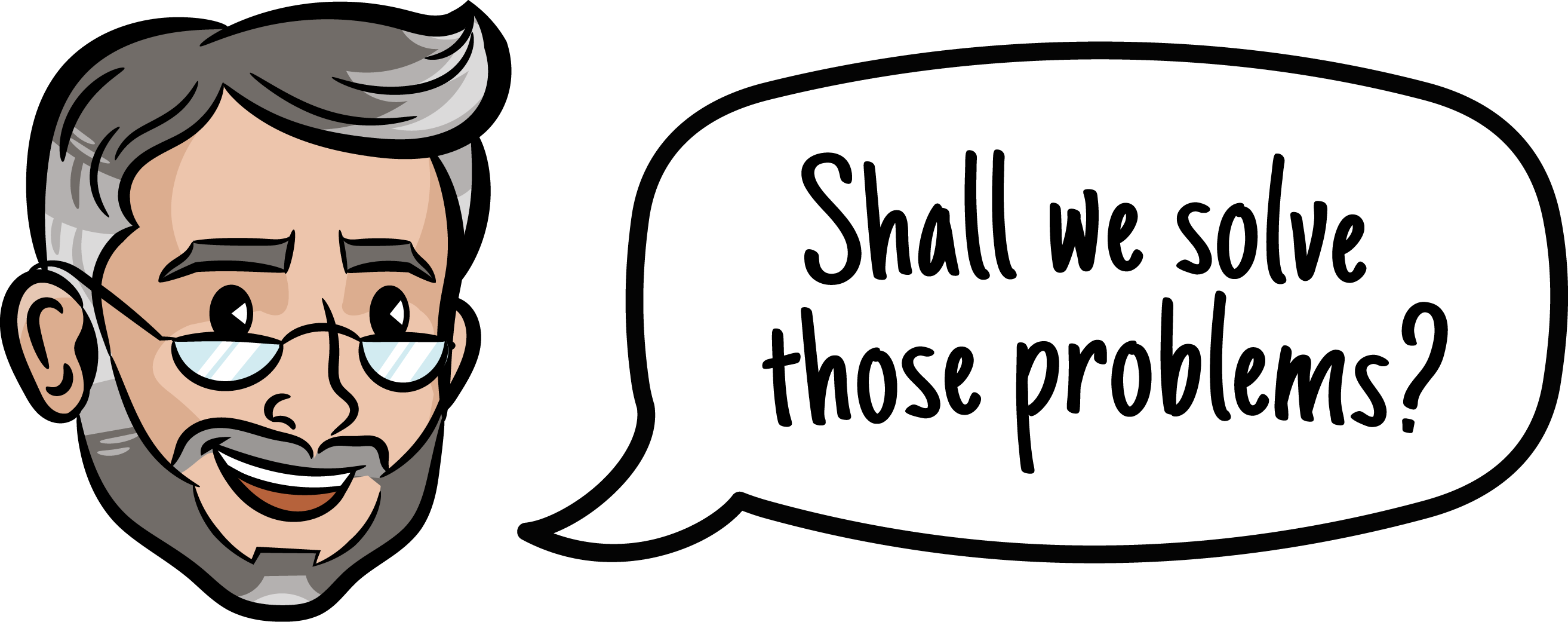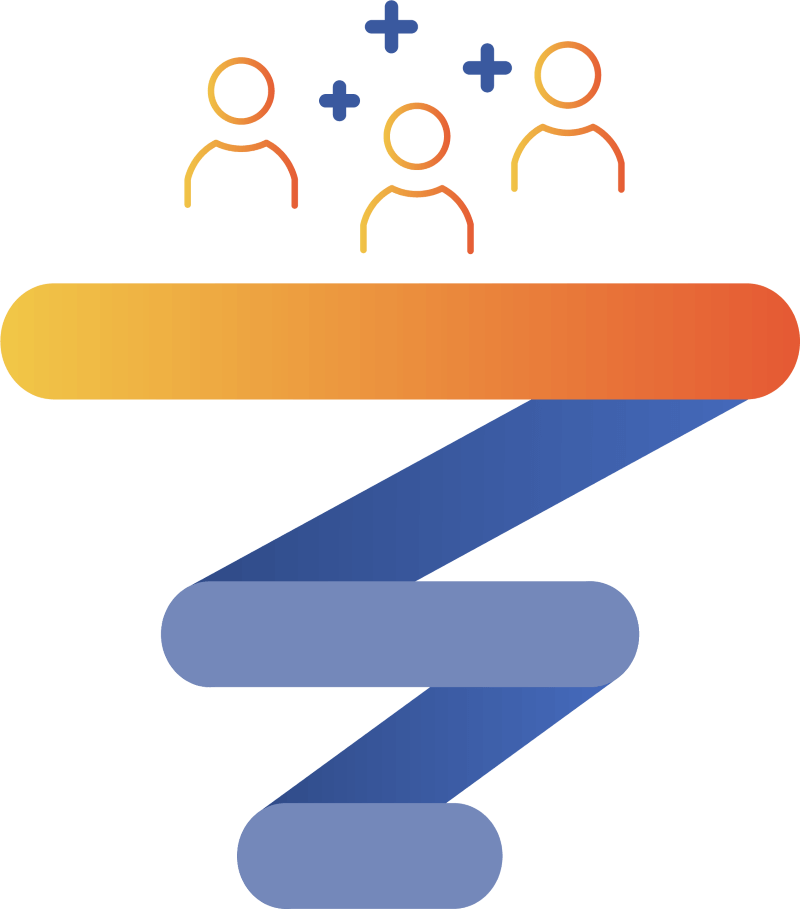
At Sales Funnel Professor, we’re often asked to design or fix sales funnels and account-based marketing or (“ABM” for short) is a common “top of funnel” source. Using it means your overall funnel is an “ABM sales funnel” or “ABM funnel” and while the title “marketing” is in the name, you must have dedicated sales professionals on the team to execute ABM.
ABM funnels benefit greatly from proper middle-of-funnel work like an awesome website and retargeting, so if you’re considering building an ABM funnel, don’t just think you’re off the hook for optimizing other common sales funnel tools.
ABM explained: think of ABM as methodology to identify certain potential clients by name (prospect companies) and work to get a list of qualified contacts at those companies to engage with your team and then hopefully buy your product or service.
In this article, we’ll dive into best practices for ABM in 2024 and how AI for Sales is changing the practice.
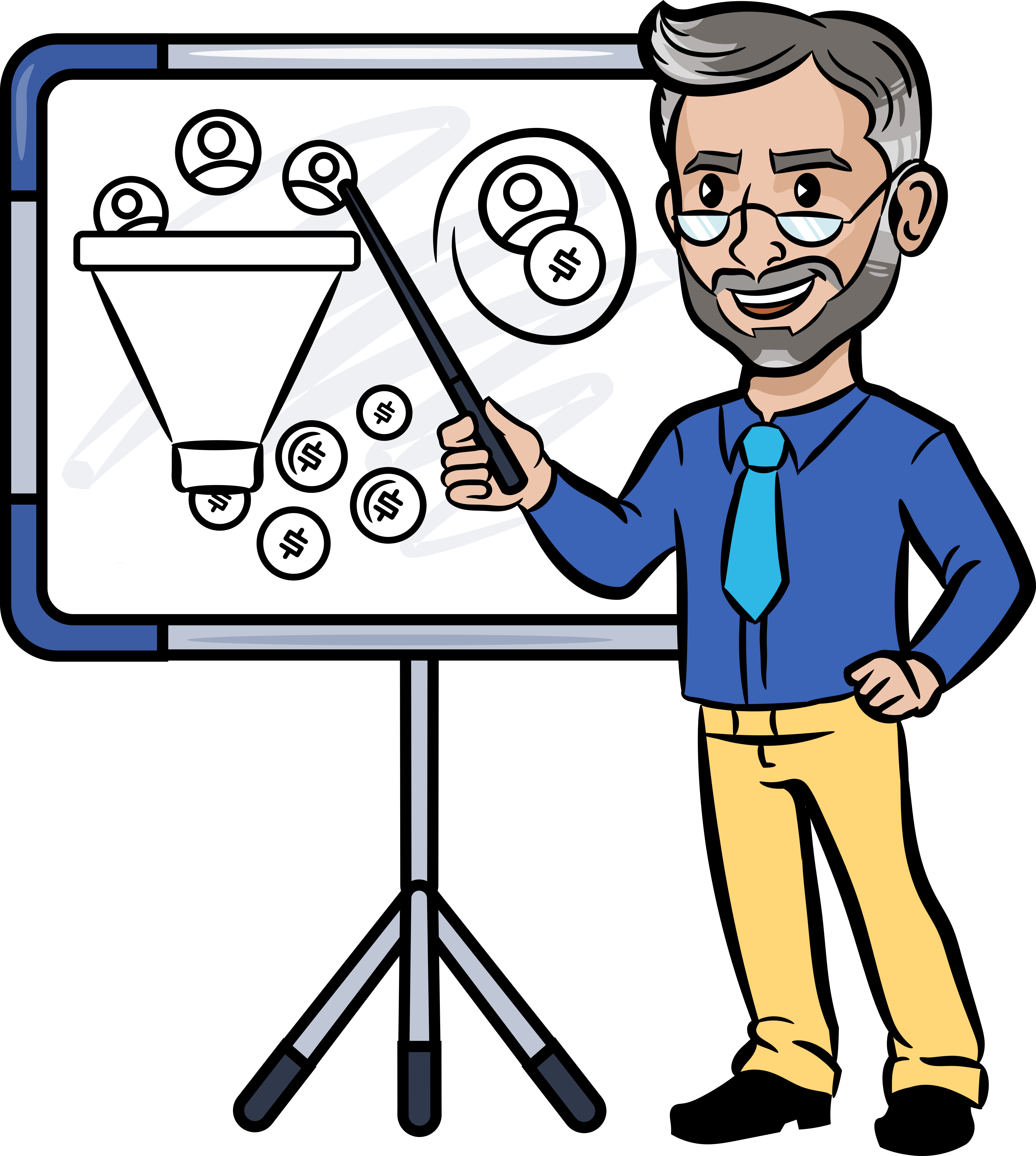
Table of Contents
Understanding ABM
Creating Ideal Customer Profiles (ICPs)
Account Selection and Segmentation
Messaging & Story Bring ABM Prospects to the Middle of the Funnel
ABM Tools, Outreach & Engagement
Measuring Success with Account-Based Marketing
The Future of ABM
Changing Roles, Smaller Teams
Challenges and Common Pitfalls of ABM
Conclusion
Understanding ABM
First and foremost, account-based marketing is ultra-targeted and even at its most optimized, very labor intensive. So if you’re thinking about implementing an account-based marketing strategy (ABM sales funnel), be sure what you are trying to sell is expensive and complex.
While ABM doesn’t require nearly as many in-person meetings as in the past (thank you, Covid-19), it does require significantly more meetings, phone/video calls, correspondence, etc. than other types of inbound approaches and has one of the longer sales cycles on average, often managing multiple decision-makers and committees at the prospect client.
While you could theoretically create an ABM sales funnel with just a CRM and use emails and calls to close business without a website, your sales team will suffer greatly if you don’t have a coherent, properly-branded website to add credibility and accelerate understanding between correspondence (which reduces required touches/objections overall). You’ll be better served if you have Purple Cow level branding.

Professor’s Note
ABM is an appropriate go-to-market strategy for high-complexity, high-value deals. Examples: B2B annual SaaS subscriptions, pharmaceutical products selling to doctors, selling technology to banks, wholesale supply relationships, etc.
Due to its high labor cost (relative to purely digital approaches), ABM is not appropriate for B2C or low-dollar B2B products.
So for complexity and effort reasons, the juice has to be worth the squeeze for you to choose ABM as part of your go-to-market strategy.
You’ll find both “full-cycle” and segmented sales approaches where an SDR hands off to an account executive, or in even higher prestige sales, a VP or even C-Suite member may be doing the selling.
Creating Ideal Customer Profiles (ICPs)
Did we mention ABM is labor intensive and has long sales cycles?
Given that’s the case, good ABM funnels have very well defined ICPs. The team utilizes all of their knowledge about product<>market fit, what’s going on with different industries and companies, and how difficult or easy any particular company might be to convince to make a purchase to identify the highest-likelihood-to-close target persona or ICP in sales.
Creating one or a few ICPs is the first part of identifying the “low-hanging fruit.” Once a list of potential prospects is identified, it’s then time to start analyzing who in that group is most likely to buy first and focus there.
Account Selection and Segmentation
The account selection generally starts with a prospect list. With ICP in hand, a lead provider like Seamless AI can be used to pull contact info on people that meet certain criteria: certain industries, titles, locations, revenue bands, etc.
If a trade group membership can be attained, that’s a great list to work as well.
If you’re trying to sell to people who already use a weaker competitor of yours, you may be able to find a way to figure out who is a client of theirs.
Once the broader list is identified, an early ABM go-to-market strategy will usually focus more narrowly. It’s common for companies to focus in their backyard (home state or home country), for example, while they test messaging and get familiar.

Professor’s Note
Companies who spray and pray (fail to segment) severely hamper their ability to learn and finetune their messaging because their prospects have nothing in common and thus their results can’t be expected to follow any particular statistical pattern.
A great way to further qualify accounts is to apply the BANT framework (Budget, Authority, Need, and Timeline). If a fintech is bank marketing, they would be well-served to find banks that have already adopted other fintechs, not actively in a merger, etc. Ensuring prospects meet BANT criteria before investing significant time can help avoid wasted effort and improve close rates.
Close rates may be higher and sales cycles shorter when selling to companies that may want to “buy local.”
Once outreach starts, the list is further segmented and weighted funnels start to make sense. If you need help explaining sales funnels to your staff, try using our free sales funnel illustrations.
If one prospect is reading every email and sending back follow-up questions, you probably want to focus on them over someone who has not responded to the last 5 touches.
Messaging & Story Bring ABM Prospects to the Middle of the Funnel
With ICP in mind and a clear understanding of the benefits of a product or service, it’s time to craft messaging that creates clarity and trust as quickly as possible.
The overall story should ideally frame your potential client as the hero, your product or service as the guide, and be sure to articulate who or what the enemy is. A StoryBrand framework is included in our sales funnel audit service as it often helps create cohesion between sales and marketing communication and gives clients a way to get emotionally attached to what they might purchase.
Whether your sales team instructs people to visit a website in your middle of funnel or not, they will. So be sure it’s polished: sells credibility, is memorable, same messaging as your sales team, clean design, etc.
Setting aside story and messaging, wise sales teams should be aware with ABM that CFOs want to be able to understand the ROI of a B2B product. So be prepared to speak to the “payback period” or how your product actually pays for itself to win CFO’s over.

CEOs often come from three tribes: sales, product, and finance. Understanding what tribe a particular CEO is from should inform how to communicate with them.
Whatever the messaging and story become, those elements need to persist between the website, phone calls, individual emails, sales slicks, etc.
To know you’re on the right track, you want to see a high percentage of strangers contacted responding, clicking on links, booking meetings, etc.
ABM Tools, Outreach & Engagement
With ICP in hand and a list “pulled” from somewhere, it’s time to put it into a CRM. For ABM, we currently prefer to configure HubSpot as it eliminates the need for extra “point” software solutions. No need for SalesLoft, Calendly, Unbounce, chat software, etc. HubSpot does all of that internally.
For ABM, you want your CRM to be optimized so that your sales team is actually building relationships on live conversations as much as possible.
Secondarily, you want to record as much of the buyer’s journey as possible for reference for your sales people to study before a call and also so that you can keep optimizing your approach.
Tools that automate reporting and allow you to quickly A/B test variations and decide on a winner will help your team get better and better at ABM over time.
Outreach is often outlined in what various systems call sequences or cadences. From the day I decide a particular person is an active prospect, they will get an email on day 1, another on day 3, a phone call on day 5, another email on day 7, a LinkedIn connection request on day 9, etc.
A great sales stack will basically let a salesperson apply automation to the prospects of their choosing and then watch their calendar fill up with qualified meetings.

ABM: Critical Tools
CRM – Stores all the “rolodex” type data and records activity on each contact record.
Lead List – Whether live access to a database or by finding or purchasing discrete lists, the team needs leads to investigate and work.
Sales Automation Tools – Modern sales teams using SDRs need to make 80-120 outbound touches per day and automatically be notified when a prospect gets warmer. Clients should be able to book a meeting at their convenience on a live scheduler.
Sales Enablement Tools – Sales slicks, pitch decks, explainer videos, etc. are great tools to help sell to a group of decision-makers, some of whom may not have time to join each call/meeting.
Measuring Success with Account-Based Marketing
Measuring success with ABM can be a lot of fun when your tools are set up correctly. The “Account” in ABM really means a particular company. Tied to a company, you have what SalesForce calls an “Opportunity” and HubSpot calls a “Deal.”
When you set up your CRM and decide on your CRM hygiene policy, you should have a policy about when a “Deal” should be opened. It’s usually opened at the first indication of interest but your criteria could be tighter if you desire more qualification.
Whatever policy you choose, as soon as you have a deal open, you should have a dollar amount associated it with it. The initial amount may be adjusted higher or lower as you get to know the prospect’s needs better and that’s okay.
With a number of deals open, you have what’s called a Pipeline (often called “Pipe” for short). You can quickly see how much total deal value is in your pipe. You can also see what deals with your pipe are about to be “Closed-Won” and converted to revenue.
A common “Deal State” in ABM just before “Closed-Won” is “Contract Delivered” or something similar.
Here’s a left-to-right representation of “Deal States” / “Pipe Stages” for a SaaS company with a sales cycle that requires a demo and then contract terms:

Challenges and Common Pitfalls of ABM
While ideally you’ll have a high percentage of deals you open eventually close, it’s important to monitor how many deals opened end in Closed-Lost. Was your product or service not a fit? Were you in a head-to-head competition with a competitor that won the business?
There are a lot of reasons that an ABM strategy can fail. Our own Justin Williams specializes in solving dysfunction within sales organizations.
Here are some common ones:
Low-Quality Leads
This can play out in a number of ways. Some firms are willing to purchase lead lists and then send massive amounts of emails. If you have a well-developed LinkedIn profile, you’re likely to get multiple “meeting setter” pitches per week or even per day. This is a “boiling the ocean” strategy where you just push tons of minimally directed outreach.
If there are too many bounced emails or SPAM reports (possibly because what was sold as a lead isn’t in the industry at all, for example), that bad data can cause a CRM or marketing automation platform to drop them as a client (because their email servers may get blacklisted).
Another way Low-Quality Leads can cause problems is if they’re not actually ICP. When someone in your firm (possibly a finance person) arbitrarily decides that a particular industry and job title should be a great buyer and they aren’t, that can cause a lot distress within a sales team.
Hopefully, you ideally wouldn’t open Deals at all if a prospect never expresses serious interest.
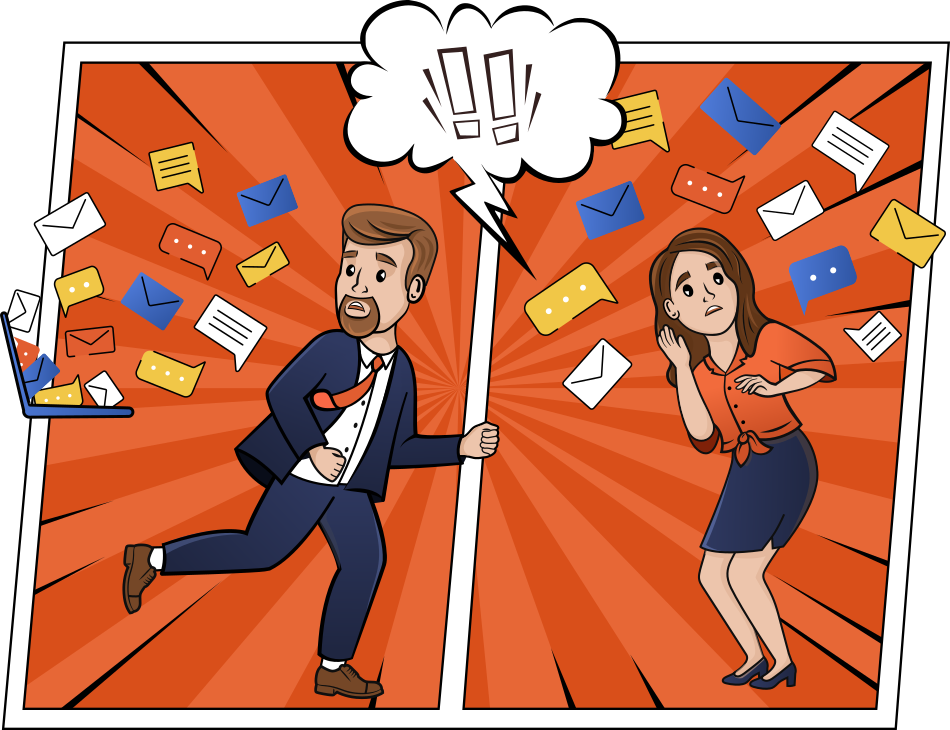
Unrealistic Touch Count & Sales Cycle Duration Expectations
When the ICP isn’t understood yet, team members may start to panic or say “this isn’t working” when it is. Any go-to-market approach where weeks, months, or even years go by before the first deal closes can be nerve-wracking and cause executives to second guess this top-of-funnel approach entirely. Touch-1 conversions are extremely rare for companies with poor story and messaging and still infrequent even for ultra-optimized companies with complex sales cycles.
If your product is for financial institutions, understand that bank marketing can take years to bear fruit with regional and larger institutions due to the committee-based approach they use. Expect multi-year sales cycles with 10-50 meetings per deal and potentially 100s of individual pieces of correspondence (touches).
Where outbound emailing or cold-calling is used for the early touches on a particular account, everyone needs to understand that’s uncommon for a prospect to respond to touch 1 or even touch 2. As the touches start to stack, responses come in. That’s natural.
Any outbound approach that has an element of interruption is likely to be ignored at least some of the time.
Overstated or Unfair Variable Compensation Structure
There’s never a shortage of demand for great sales professionals, so when you have one on the team, you need to be sure they’re actually able to achieve whatever was stated as their OTE. If sales people are putting in the work, closing lots of deals, and not getting paid, that’s a problem.
If the carrot at the end of the stick can never be eaten, you’ll see resignations.

Professor’s Note
With ABM, a common compensation structure during hiring is to state the OTE or “On-target earnings.”
On-target earnings in US B2B software sales is often 50% salary and 50% variable comp.
No Closer
With account-based marketing, a “closer” asks for the sale, overcomes any objections, and gets the client under contract or first payment made.
Young companies that may not have anyone with a strong sales background may hire people who don’t currently or won’t ever be good at closing business. The best sales people blend emotional intelligence with a very disciplined approach to funnel management and hate leaving money on the table.
Sometimes it takes leaders time to recognize that they staffed a non-closer in a closer role or that they aren’t a closer themselves if the founder is tasked with more complex ABM activity initially.
Coddling someone who can’t handle the crucial task of bringing money into the company quickly creates a toxic situation for everyone. Remember: Coffee is for closers.
The Future of ABM
Over the last 10 years, sales automation has sped up prospecting significantly. Lead acquisition has been become faster and the overall quality from the best providers has gotten better as well. Live schedulers have reduced pre-meeting friction significantly.
With more all-in-one tools versus cobbling together complex sales & marketing stacks, the admin time to keep tools in sync has diminished greatly.
All of that said, the arduous tasks that historically took incredible discipline have largely been automated already.
The next wave of ABM enhancement centers around the use of AI.
AI is already being used to impersonate junior sales people on LinkedIn in the context of trying to start conversations and set meetings.
AI is also being used to write email correspondence. The efficiency gains are clear, but it’s not clear if those use cases are actually accelerating sales cycles.
Why? At present, AI-written correspondence is often obvious upon sight. Even more obvious is when someone takes a meeting with a real human and figures out that a fictitious person set the meeting. The challenge is that trust is immediately diminished.
Where AI is being used without consequence is on the research side. It can be valuable for helping prepare for meetings or in ideation sessions where lots of possibilities need to be surfaced.

Changing Roles, Smaller Teams
With all of the existing non-AI automation that is already available plus new AI tools in standalone and CRM-embedded form, the tasks traditionally assigned to an SDR are disappearing.
No one needs to manually search and import contacts into a CRM. Outbound emailing as early touches could be automated to the tune of 500 per day per SDR 5 years ago within HubSpot. With LinkedIn’s “walled garden” approach to outside tools, connection requests and messages between connections were thought to be authentic 2 years ago. Not anymore.
With most high-velocity ABM approaches using live, client-facing meeting schedulers, there’s no need to coordinate schedules for an Account Executive either. So what’s left? Live phone call-based prospecting is still part of many ABM approaches.
But overall, we’re already seeing flesh-based SDR roles somewhat evaporate as closers can put their prospecting on autopilot or have someone in marketing or even a fractional CMO run it for a number of closers.
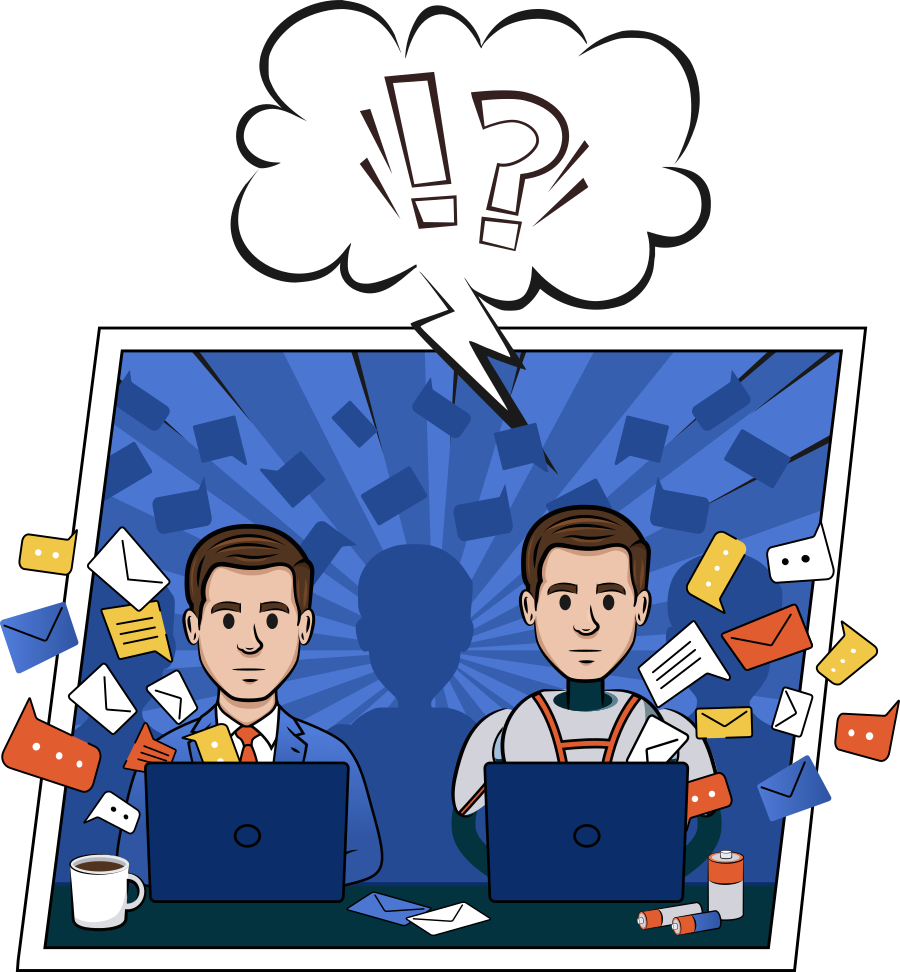
Conclusion
While ABM as a top-of-funnel source might not be exactly what it used to be with so much technology, it’s still a viable, ROI positive approach for high-dollar, high-complexity services and products. If the buyer persona is easily defined by industry and job title, even better.
The great news is that running ABM is becoming less and less labor intensive. And for closers who really enjoy building relationships and winning business, they’re able to spend significantly more of their time doing the fun and letting automation take care of the mundane. If you want to build a scalable, disciplined ABM motion that attracts the right accounts and shortens sales cycles, explore Top of Funnel: Account-Based Marketing (ABM).

